CREWS 10: Hybrid Handbook – A Workplace Guide
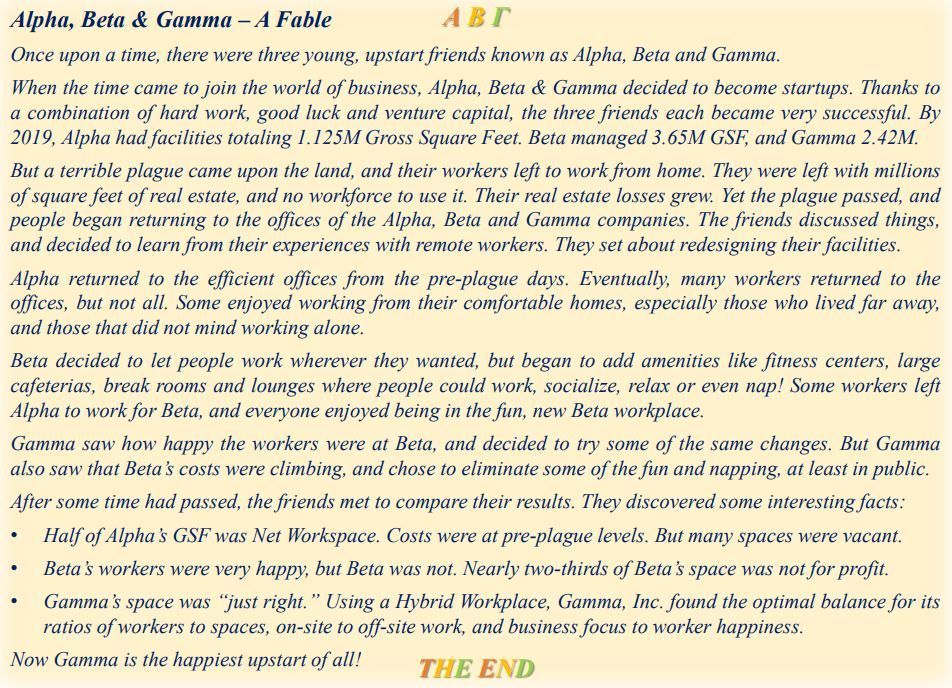
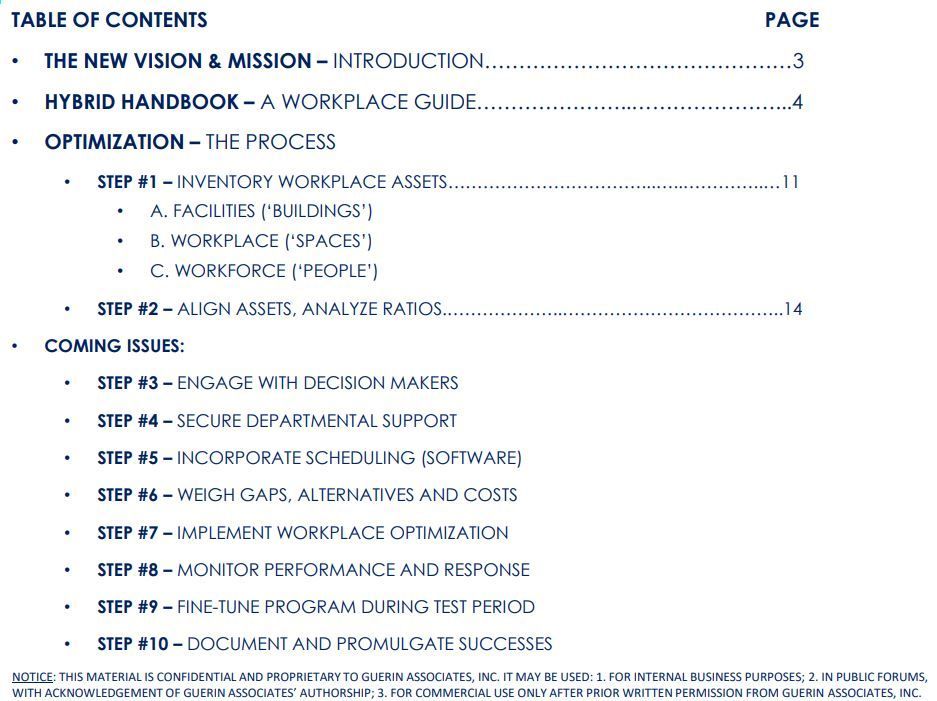
THE NEW VISION & MISSION: INTRODUCTION
This is an essential moment in the relatively modern field known as real estate and facilities management. We prefer the term “CREWS” for Corporate Real Estate, Workplace & Services. This reflects corporate status, and a role as a provider of workplace and services, rather than a maintainer of bricks and mortar. An ever-expanding range of serious responsibilities is calling for New Vision, Mission, and Models for the field, such as:
• Security and cybersecurity against terrorist threats
• New environmental, social, and governance policies
• Worker safety and wellness during a global pandemic
• Hybrid workplace strategy in the post-pandemic world
• Artificial intelligence (AI) and the Internet of Things (IoT)
We now face an unprecedented dilemma: Many professionals are unsure how to begin post-Covid initiatives. Like us, you have probably endured dozens of webinars, Zoom sessions, and teleconferences and read books, articles, and editorials about getting things right for the returning workforce. Yet some individuals report successful working conditions that are entirely at variance with the advice.
So what is the right workplace solution? Pre-pandemic plans with changes? Remote workforce? Hybrid Office?
We believe each company, even each facility, can make the decisions for themselves with little assistance from external experts. The secret is knowing how to measure, track and demonstrate steady progress. To clarify these processes, we will refer back to methods from previous chapters. Building on this foundation, we will show how to combine these methods and develop your solution tailored to your facilities and needs.
As you implement your Hybrid Workplace, we recommend comparing your progress with other firms using the forms available here. There is no cost, and your individual company’s data remains confidential.
HYBRID HANDBOOK: A WORKPLACE GUIDE
This guide completes a series of articles published by Guerin Associates (GA) over recent months under the title: CREWS: THE NEW VISION & MISSION - Models for Corporate Real Estate, Workplace & Services. We refer back to parts of those published issues at certain points, so here are links to what we’ve issued so far:
CREWS 1: The New Vision & Mission
CREWS 2: Critical Success Factors
CREWS 3: Services & Organization
CREWS 4: Key Metrics in Space, Occupancy & Costs
CREWS 5: Four Main Drivers of Total Costs
CREWS 6: Three Key Dimensions of Total Value
CREWS 7: Benchmarking: What, Why & How
CREWS 8: Radar, Value & Other Great Charts
CREWS 9: Prismetrix - Space, Value & Costs
The main point of a Hybrid Workplace is to attain the optimal balance of on- and off-site work, and thereby address the needs of CREWS, the Business, and the Workers. The objective of this Handbook is to help CREWS professionals optimize their own facilities through a data-based approach. To highlight some of the key elements of the optimization process, we are providing the following aids in BLUE FONT:
• HYBRID HINTS – Suggestions to Make Optimization More Effective (See HINT on the next page)
• OPTIMIZATION STEPS # – A Numbered Sequence of Steps to Optimize Your Workplace
• OPTIMIZATION FORMS # – Excel Files Made Available to Use in Compiling Your Data, and submitting to Guerin Assocs. if you want confidential comparisons with other firms.
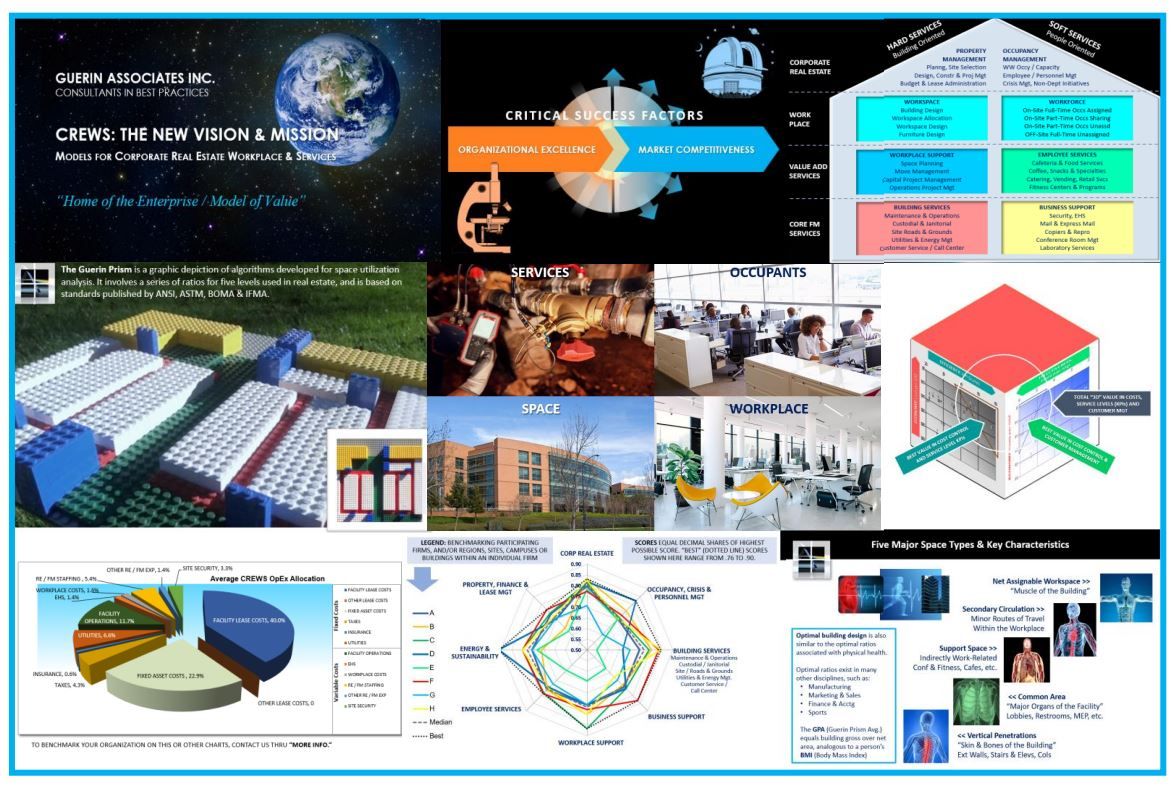

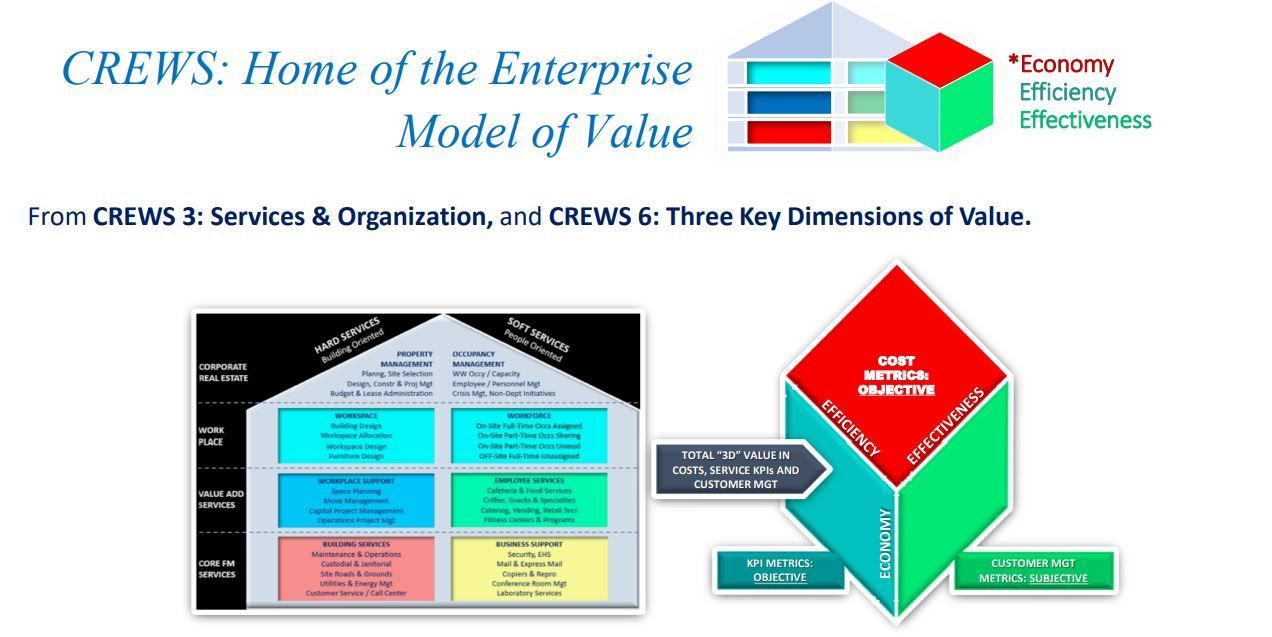

Large amounts of real estate remain unoccupied and may remain so for months. The “Burn Rate” of vacant, unproductive space is staggering. It has been accepted in part due to the difficulty and cost of replacing this space in the future, and uncertainties regarding new variants of Covid.
Three major developments make the continued need for this space less likely.
1. Employees prefer working from home, at least part-time. Hence the popularity of the “Hybrid” model workplaces, and the strong likelihood of excess space in many portfolios.
2. New models for ownership, management, and tenancy are making wide-scale use of “flex-space” (or coworking) more convenient. This allows landlords and tenants to design lease matching needs more closely than today’s typical portfolio.
3. Artificial Intelligence (AI) and space usage apps make the option of real-time, on-demand space a practical reality. This can free large amounts of space for disposition, subleasing, or higher, better use.
These trends require a bigger picture of the workplace, and insight into the key elements for highly productive, cost-effective use. We begin our quest in this material with New Lessons From Benchmarking.
The following charts illustrate some of the unsustainable changes brought about by the global pandemic.
Participants in the latest Facilities Forum® 2021 study reported an Average Assigned Occupancy of 65.2%.
Estimated Actual Occupancy averaged 10%, with 90% vacancy during normal business hours …
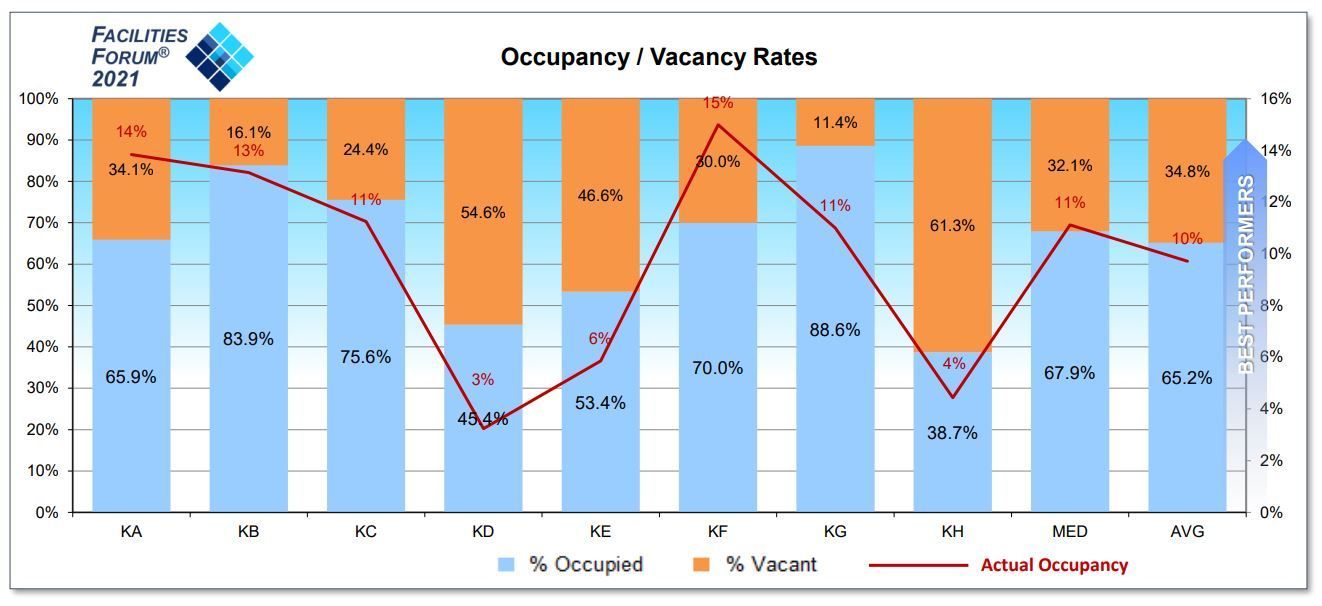
… Actual RSF per Occupant averaged 2,795, versus the nominal figure of 368 RSF per Assigned Occupant …
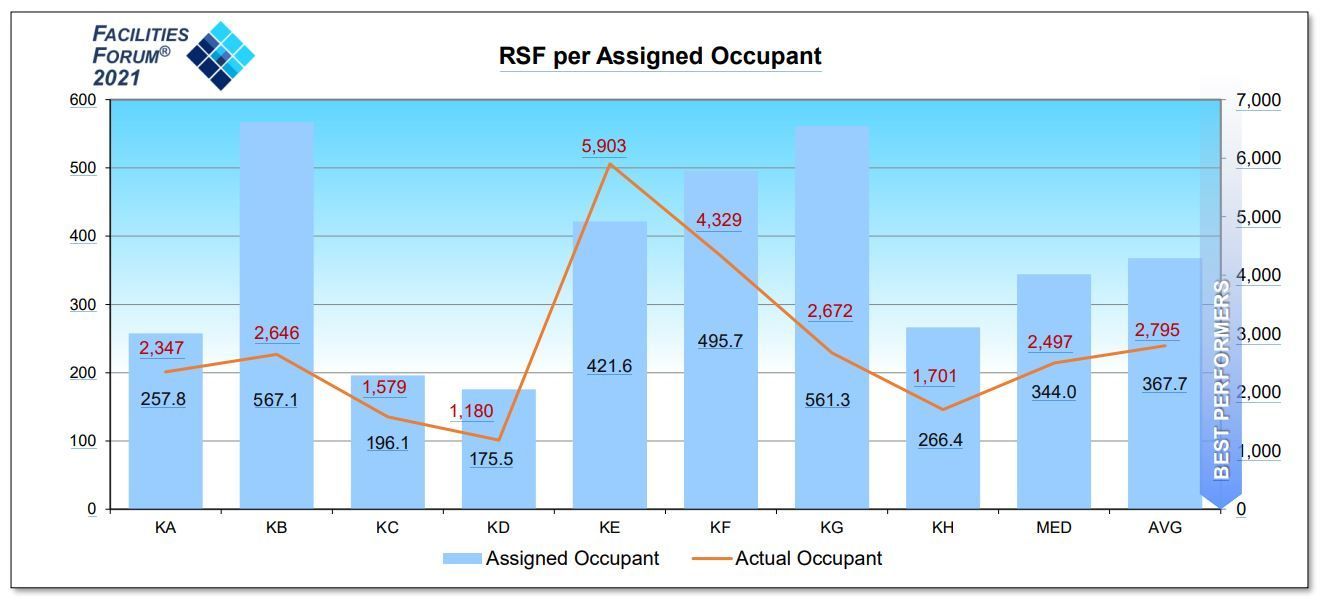
… and unassigned vacancies produced a “Burn Rate” total of $374 Million for the year in underutilized space. Estimated Actual Vacancies (counting all vacancies as underutilized space) cost approximately $975 Million for nine participating firms, or over $100 Million dollars for the average firm in the Facilities Forum® in 2021 study.
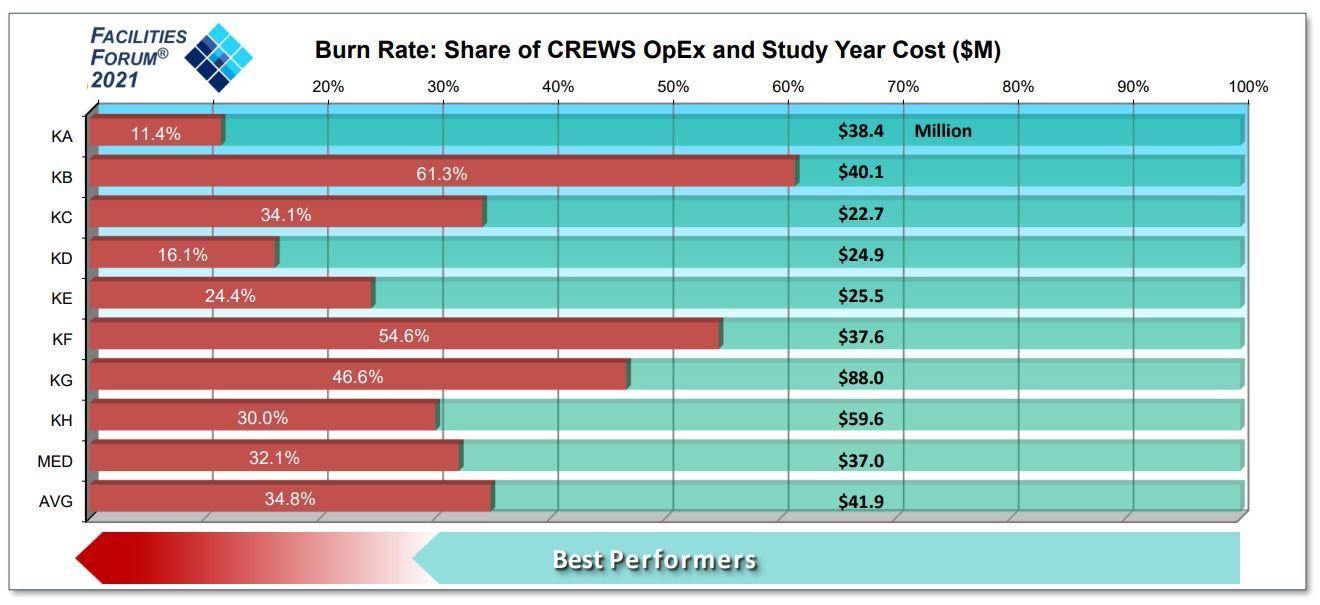
Facilities, Workplace & Workforce
There is a hierarchy of value among these elements, which can be examined in financial terms.
1. Buildings can cost $400 per Gross Square Foot in initial construction over the course of 1-2 years.
2. Operating costs for a typical office facility can cost $60 per RSF, for Total Costs of Occupancy. This includes Building Services, Workplace Support, Business Services, and Employee Services and Amenities. See “CREWS 9: Prismetrix: Space, Value & Costs,” and “CREWS 3: Services and Organization” for more information. The Total Cost of Occupancy was $22,080 per Employee in our most recent Facilities Forum 2021 Study (2020 Data).
3. Personnel costs exceed Facility Operating Costs. Fortune 500 salaries average $76,722 (SimplyHired). Zip Recruiter reports an average salary in Silicon Valley (the site of most of our study participants) of $89,686.
4. Revenue per Employee averaged $428,143 in Facilities Forum 2021. Revenue per RSF averaged $1,552.
5. Following is a TreeMap illustrating Revenues, Salaries, Profits, and Total Costs of Occupancy per Employee. TCO is a fraction of personnel costs and profits and a very small fraction of revenues.


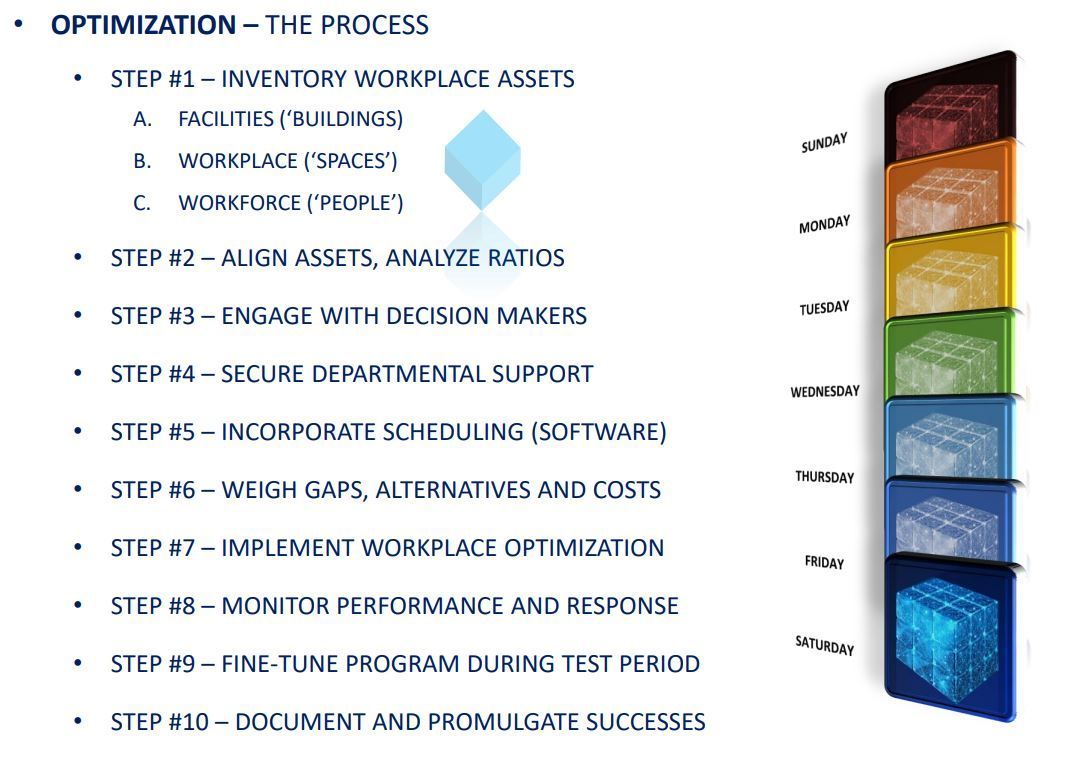
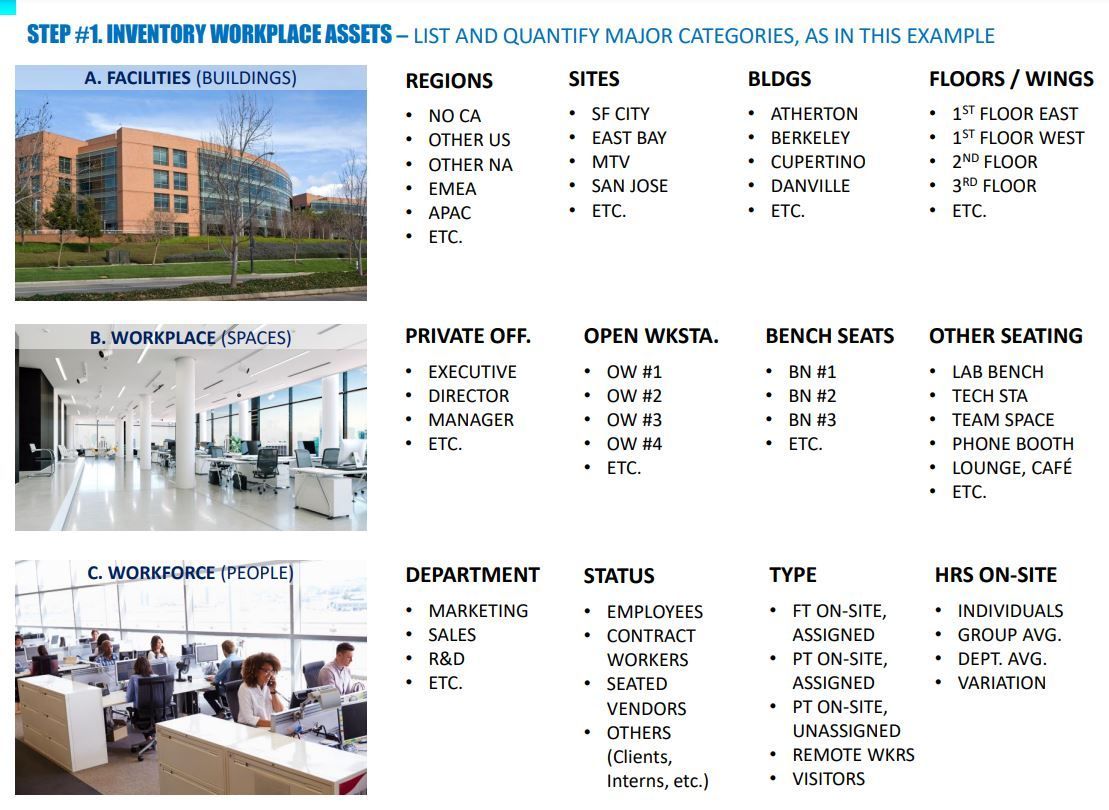
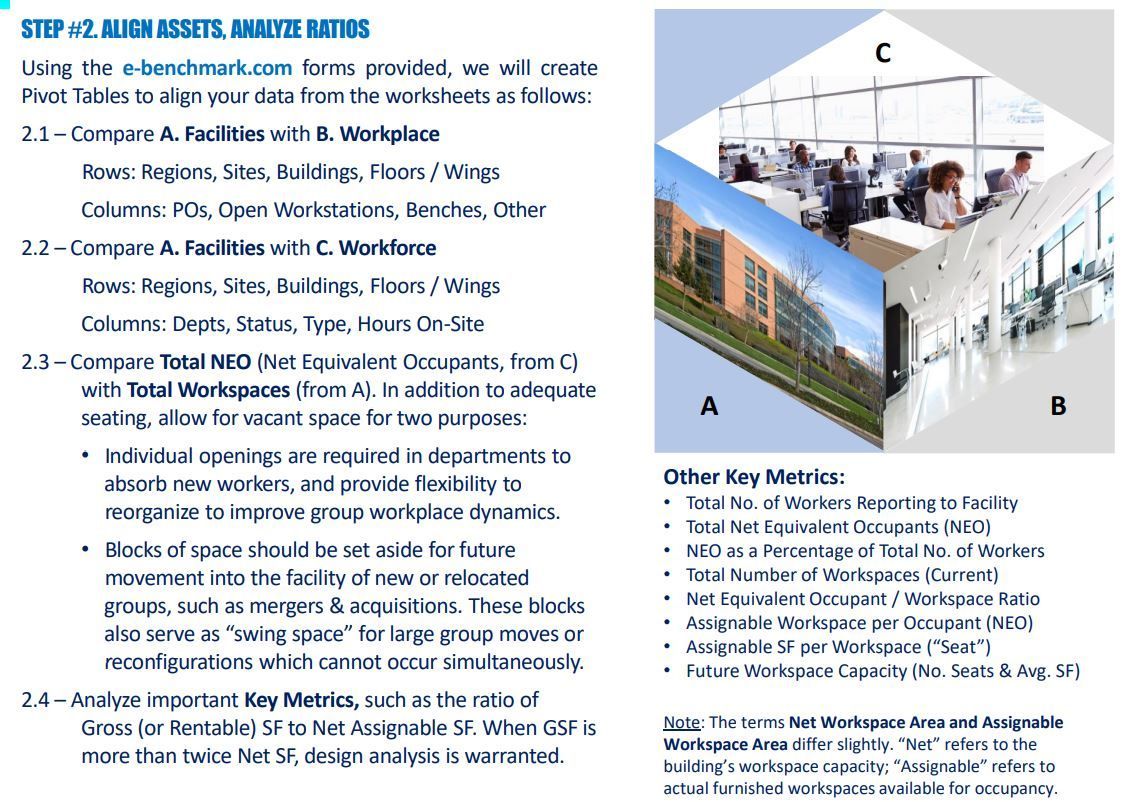
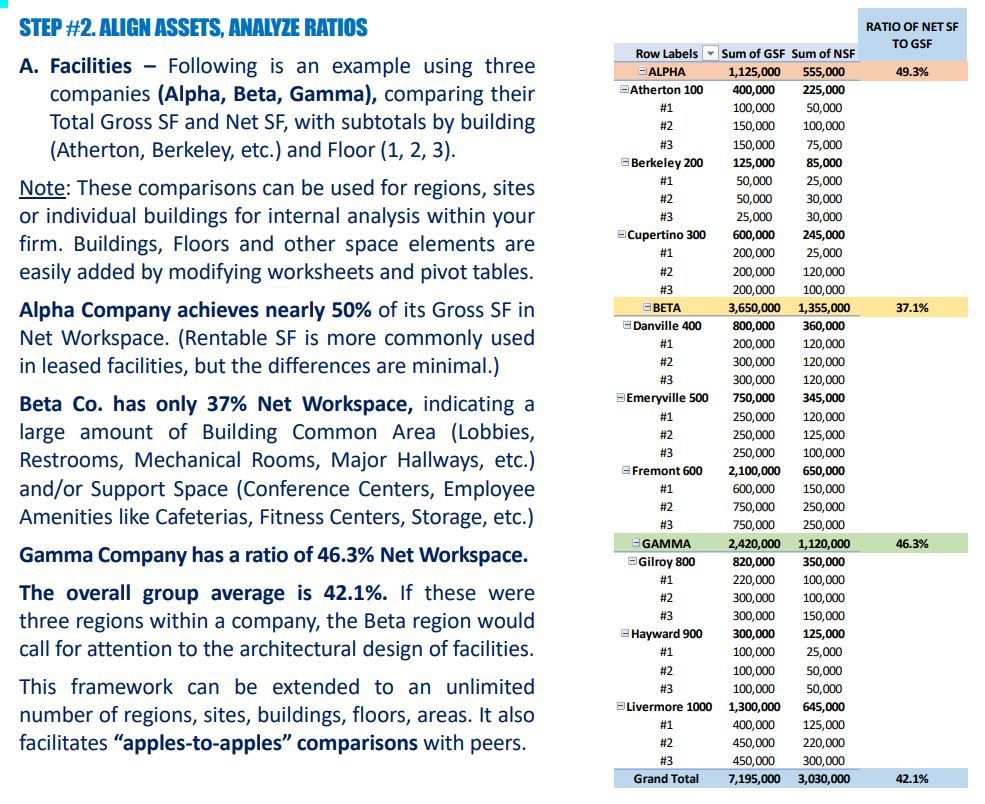
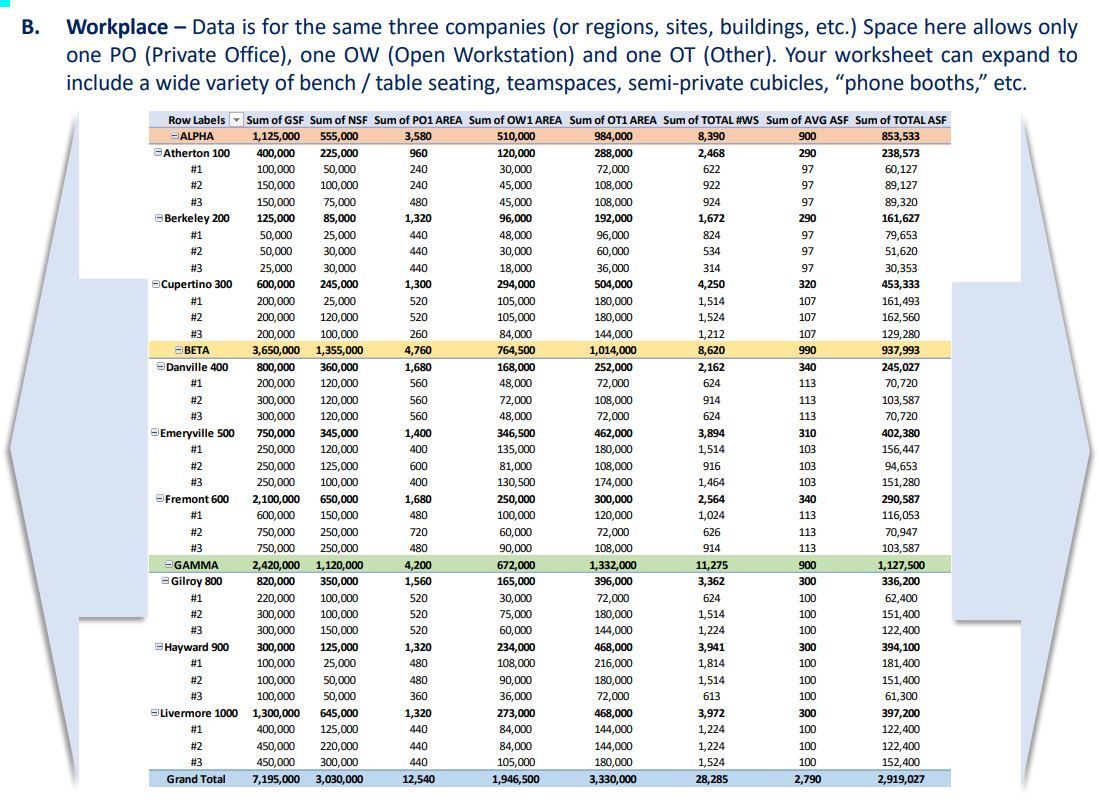
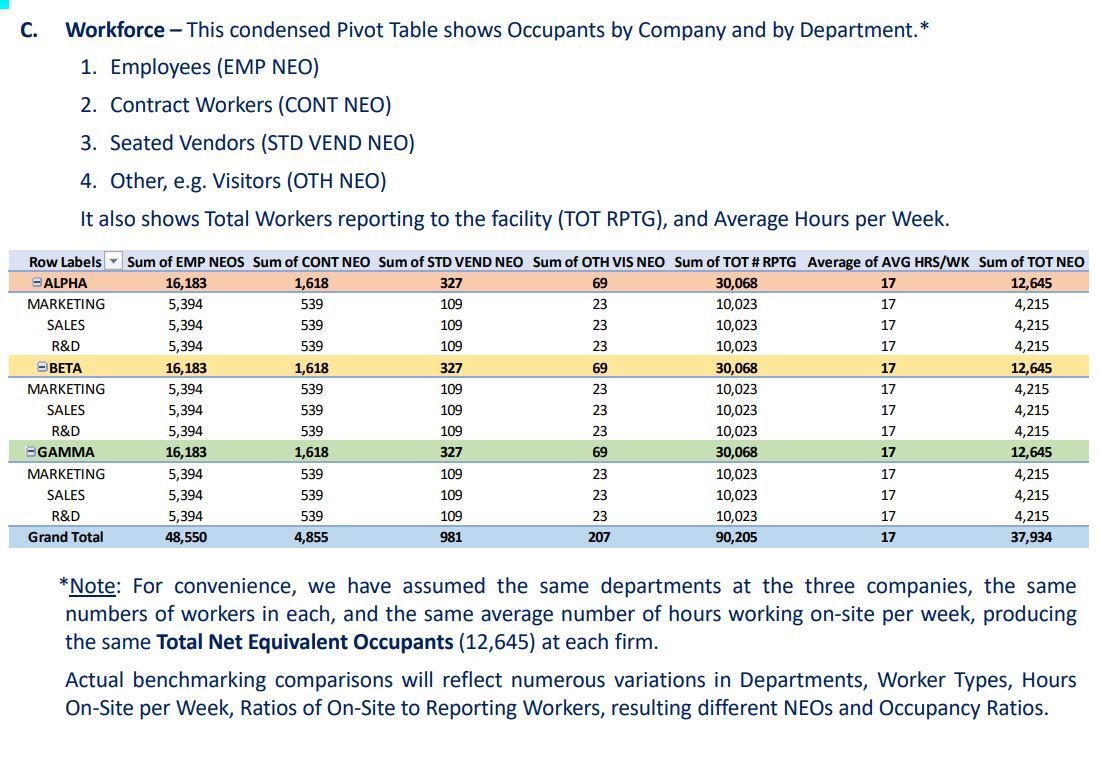
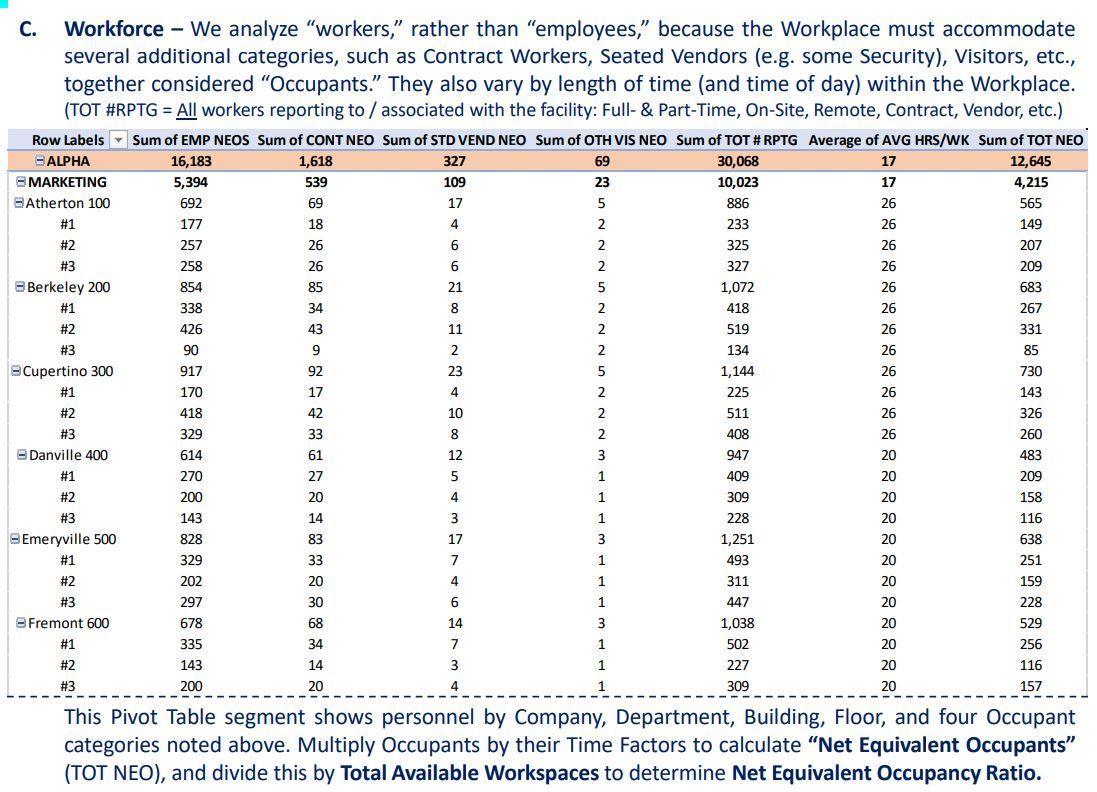
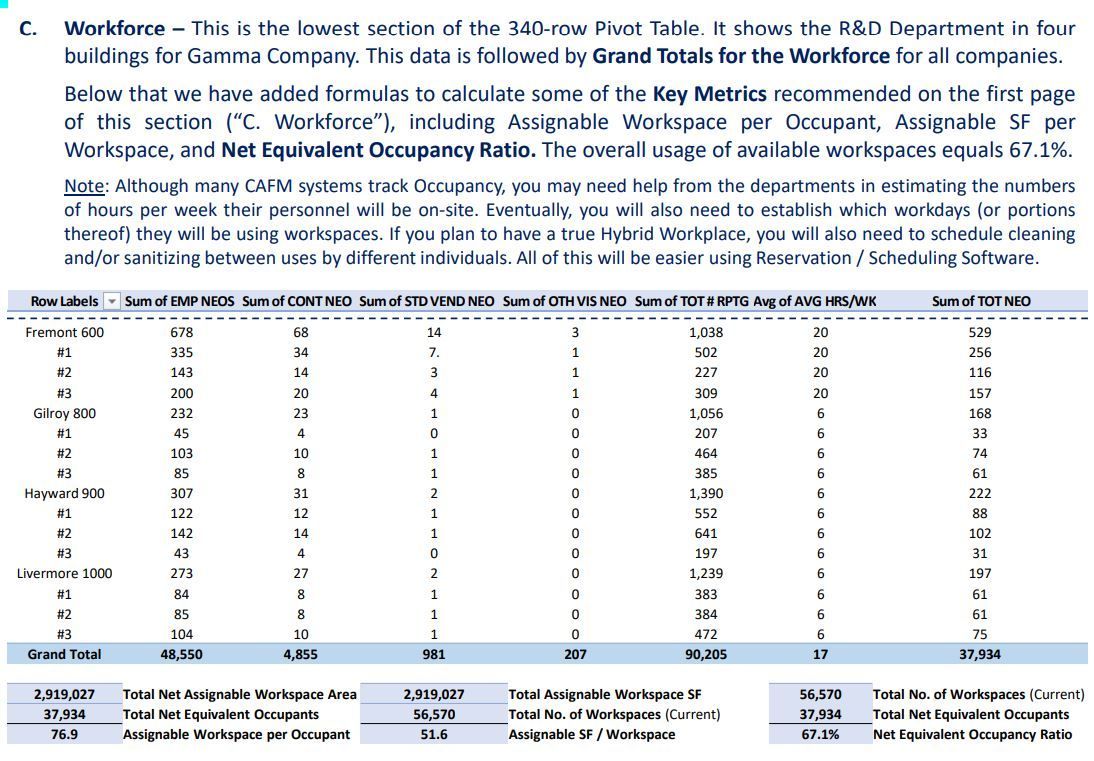

The NEO Ratio (67.1%) shows important possibilities with a Hybrid Model:
• Potential growth capacity for additional workers on-site of 50%
• Opportunity to shed up to one-third of the current workspace
• Increased on-site workers and/or on-site hours per worker
• Reduction in the number of current workspaces
• Redesign of workspaces for personal distancing
• Options to sublease substantial unused space
There are resources to supplement these options. For example, the rapidly increasing use of Flex Space makes subleasing more attractive and lowers the risk of running short of space. Most important, having this kind of information gives decision-makers a basis for planning, founded on actual data, rather than hunches or guesses. Unfortunately, there are not even reliable rules-of-thumb, because the post-Covid era is a new and unprecedented challenge. Another major benefit is the opportunity to show how the CREWS profession meets new challenges, serves as the Home of the Enterprise, and demonstrates a Model of Quality for all.
WHY IT’S IMPORTANT
It’s essential to establish measurable goals and achievements, and CREWS managers need up-to-date tools, techniques, and data to guide decisions. This is especially true in the current, post-Covid period of uncertainty. As seen in the introductory charts, the potential costs of underutilized space are substantial, over $100 Million at some firms. Prudent decision-making requires objective, impartial comparisons. Objective data requires consistent definitions and methodologies. We are providing those methods to firms seeking this information.
HOW WE CAN HELP
We’ve conducted studies for a wide range of firms, many of the leaders in their industries, who recognize the advantages of a leadership position. We provide rigorous, thoughtful evaluations based on our 25+ years of CREWS consulting experience, plus our prior 10+ years’ hands-on knowledge of the field. Firms that want to compare their own performance with others in a confidential way are invited to utilize the forms we have developed. Our core competency since 1996 has been space utilization, and we’ve adapted our approach to include the critical issues brought on by the Covid pandemic. e-benchmark.com is an ideal forum, and the database to help professionals attain the optimal balance of Facilities, Workplace, and Workforce. We hope you will join us in this exciting collaborative effort, offered at no cost for a limited period of time. We will share group results using confidential masking codes with the data. We list the names of the participating firms, but none of their individual data in connection with their company identity. Let us know if you want to participate in e-benchmark.com, or if we can help you in any way.
Mike Guerin
Email:
mguerin@guerinassociates.com
Phone:
908-903-9070
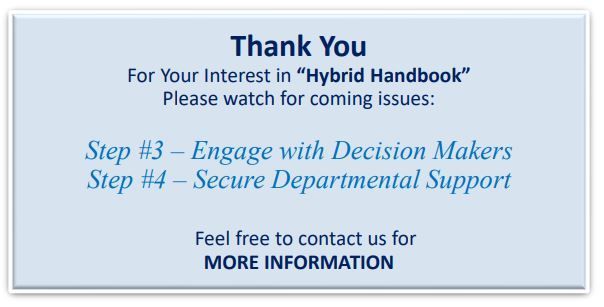
ADDENDUM – NEW TERMS, DEFINITIONS & KEY METRICS
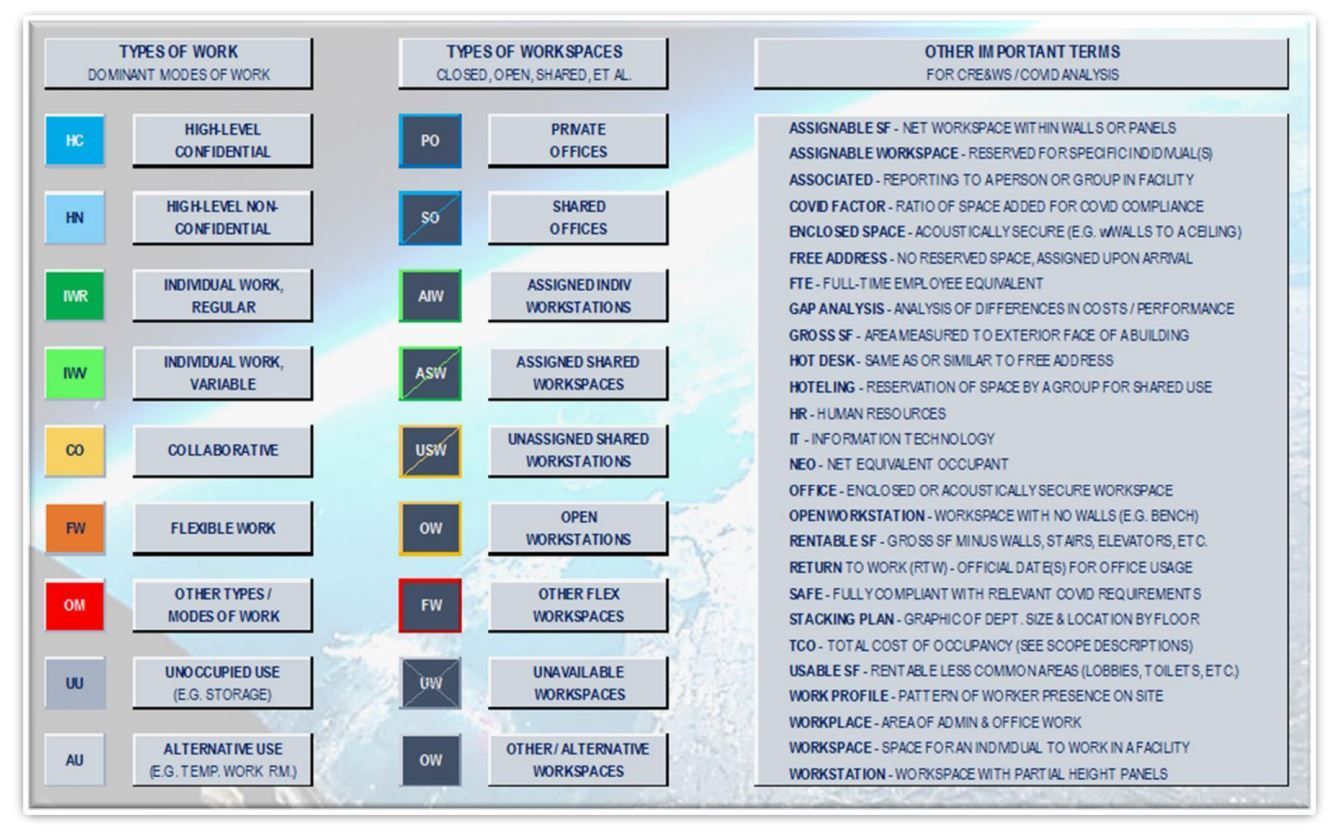
ADDENDUM – SELECTED GUERIN ASSOCIATES CLIENTS SINCE 1996
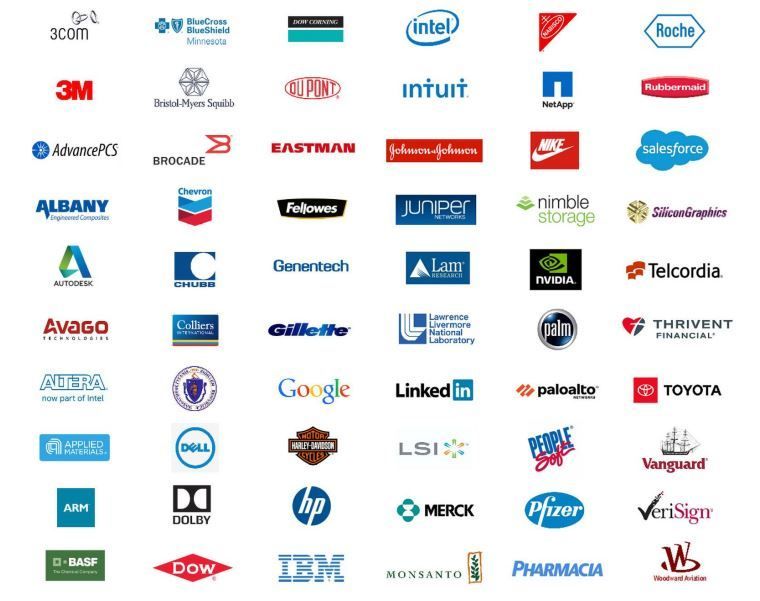
The post CREWS 10: Hybrid Handbook – A Workplace Guide first appeared on GUERIN ASSOCIATES, INC.

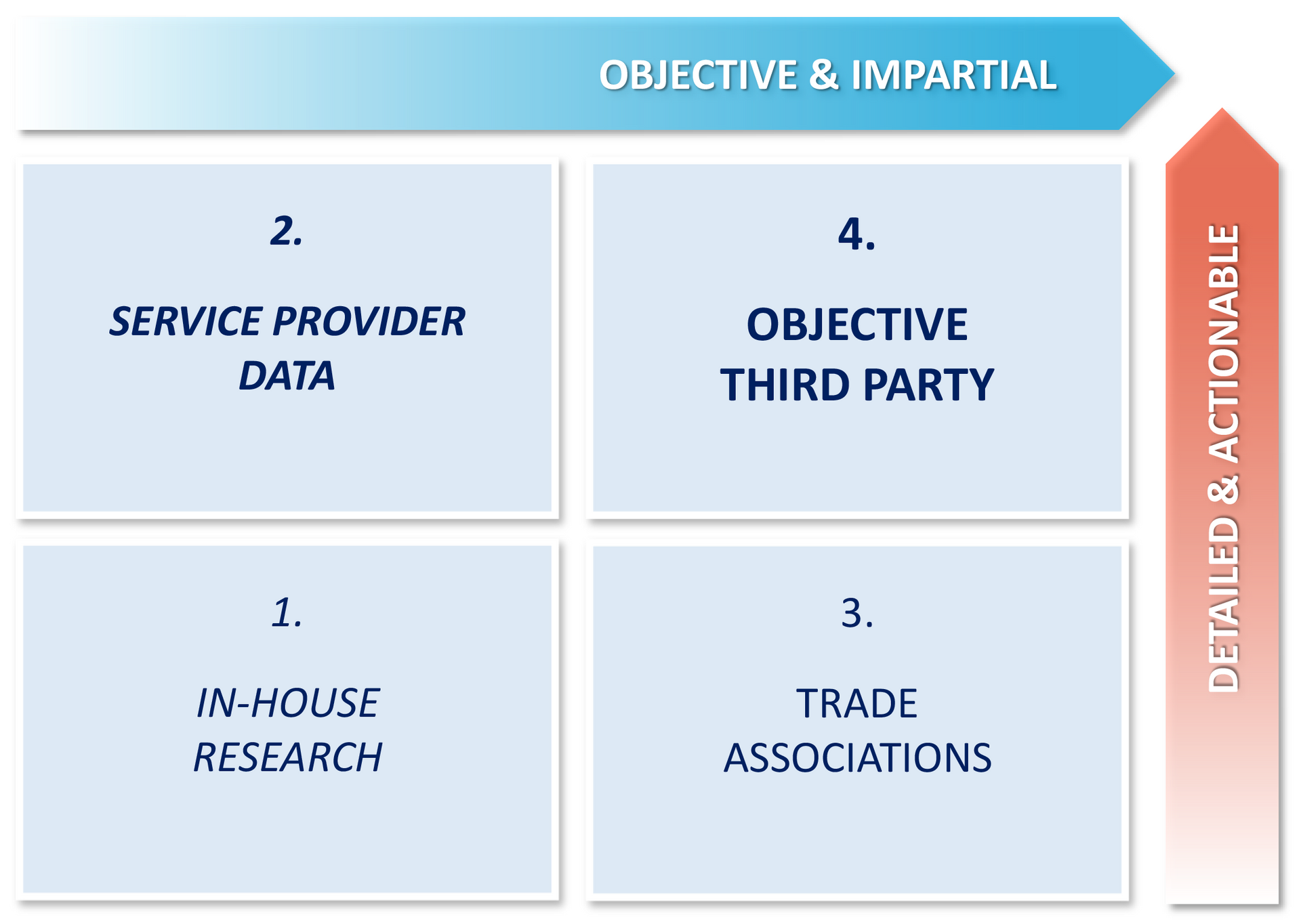


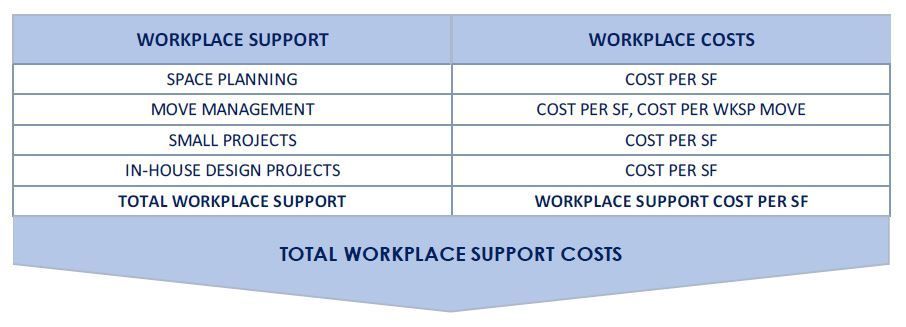


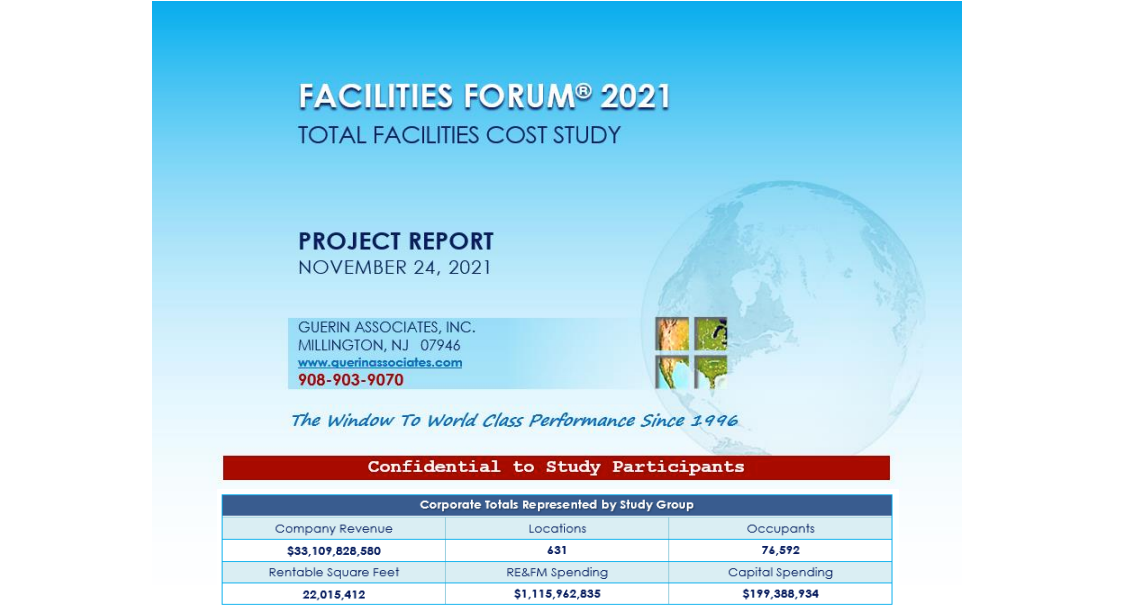
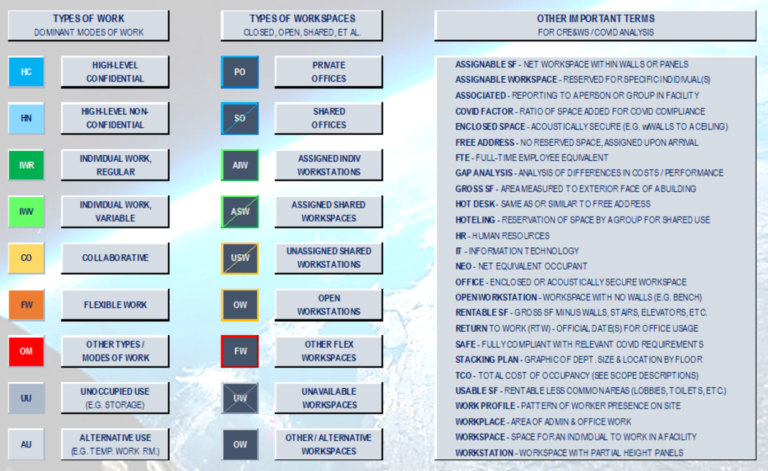
The Window To World Class Performance Since 1996
PHONE:
EMAIL:
Address:
1936 Long Hill Road #285
Millington, NJ 07946
Browse Our Site
Connect With Us
Contact Us
We will get back to you as soon as possible
Please try again later


